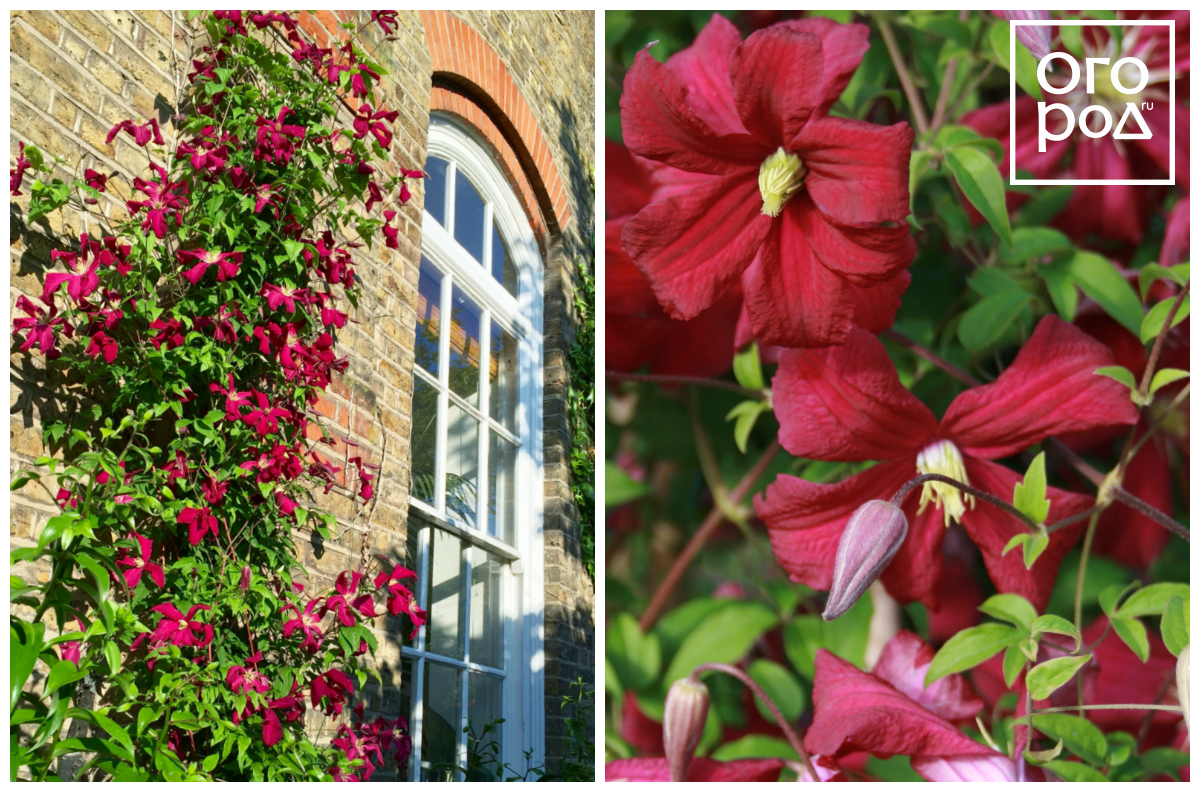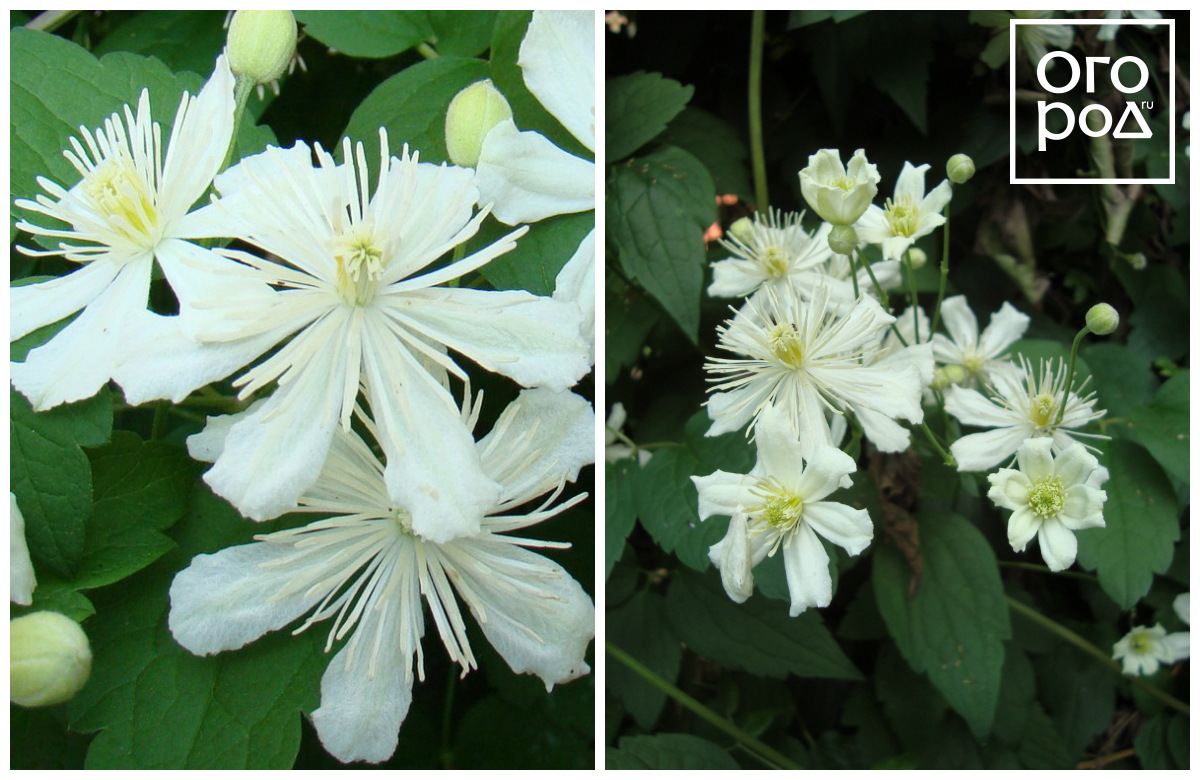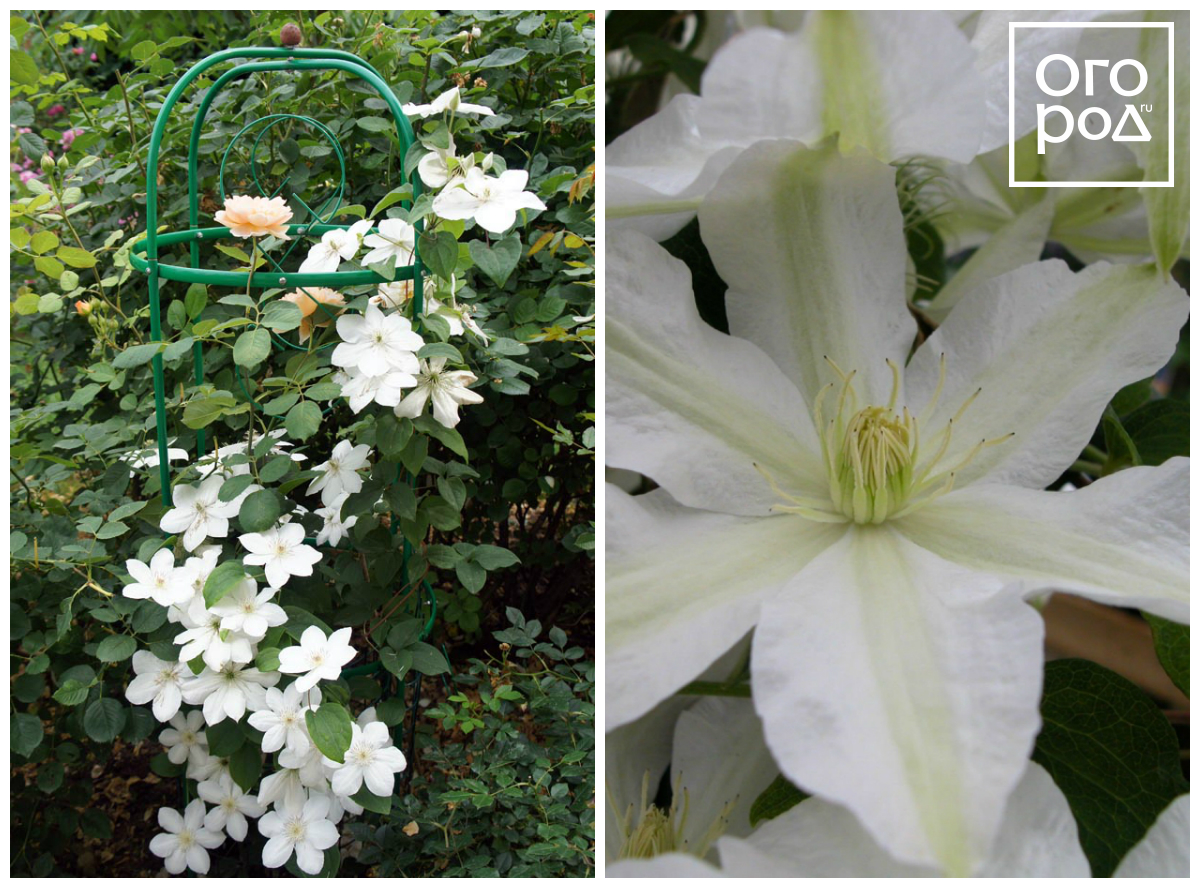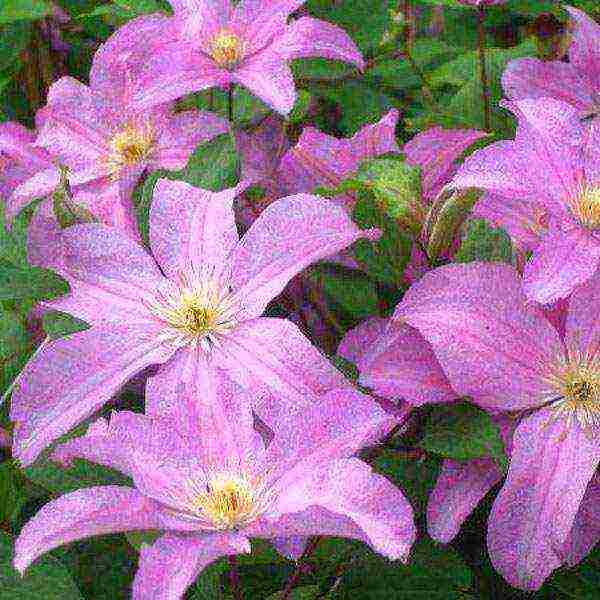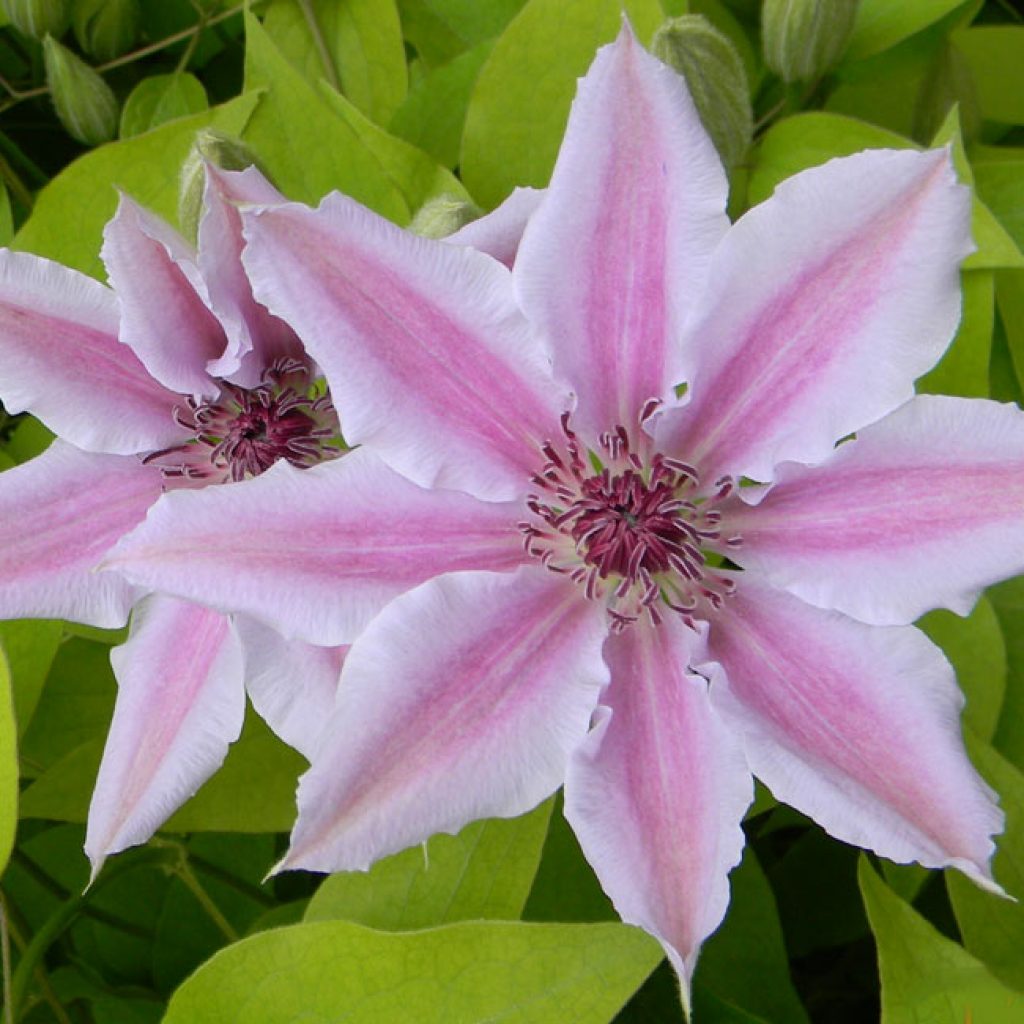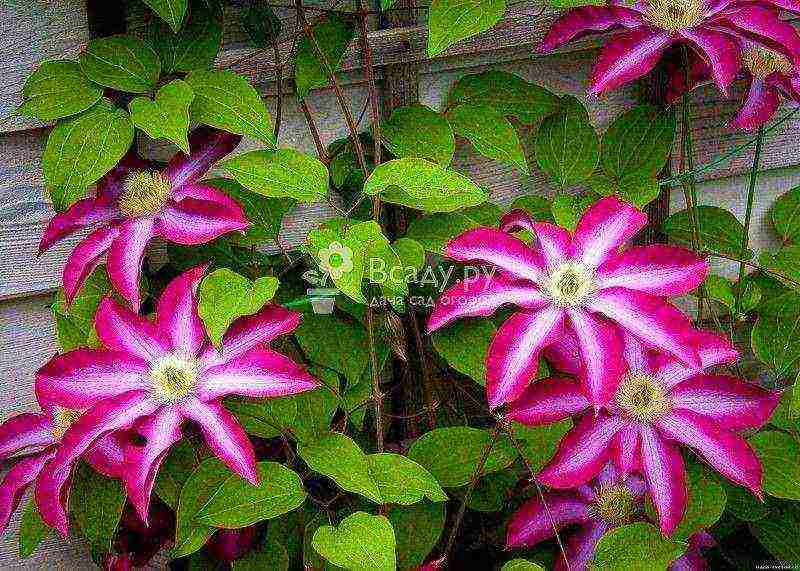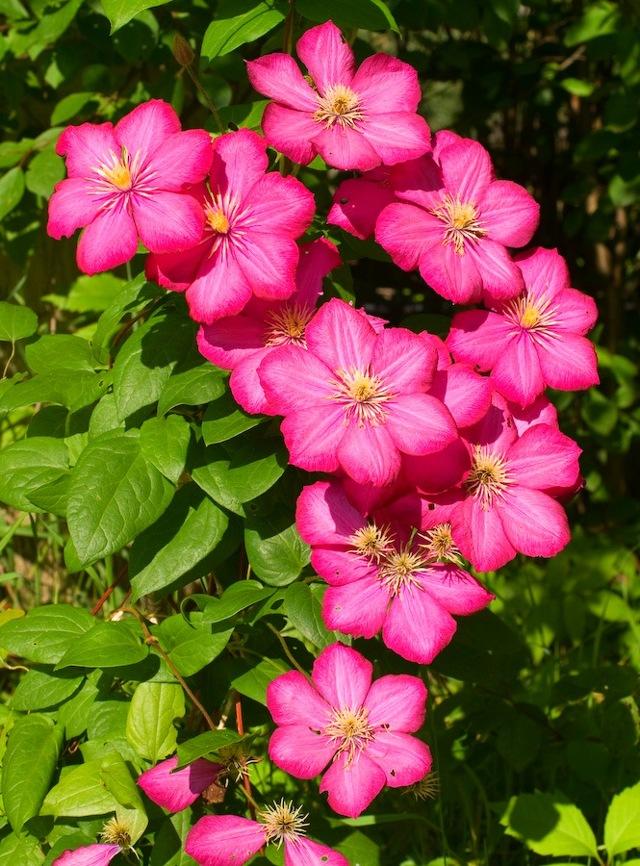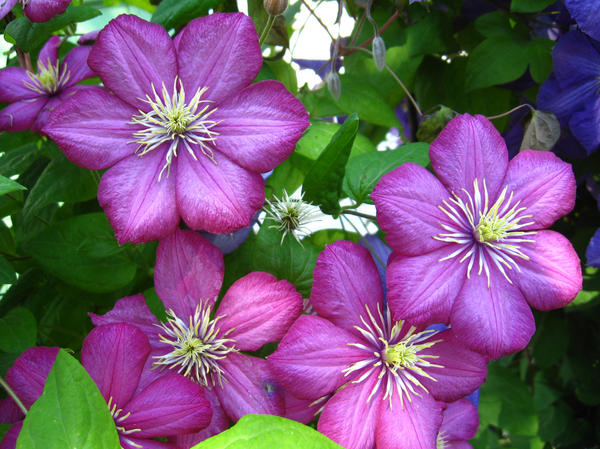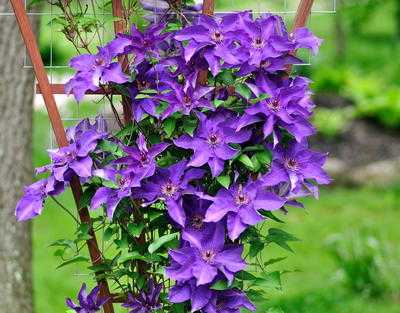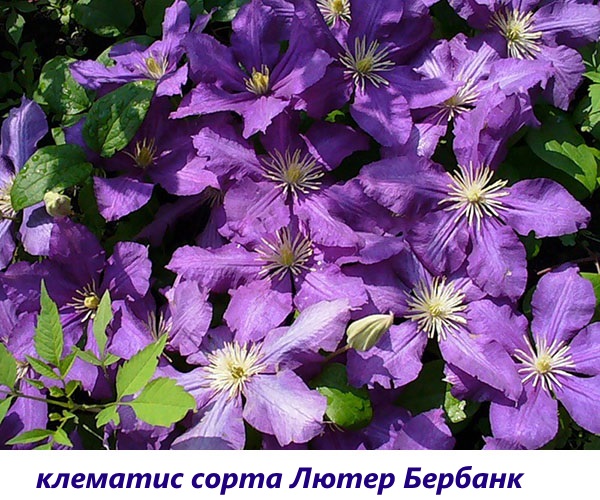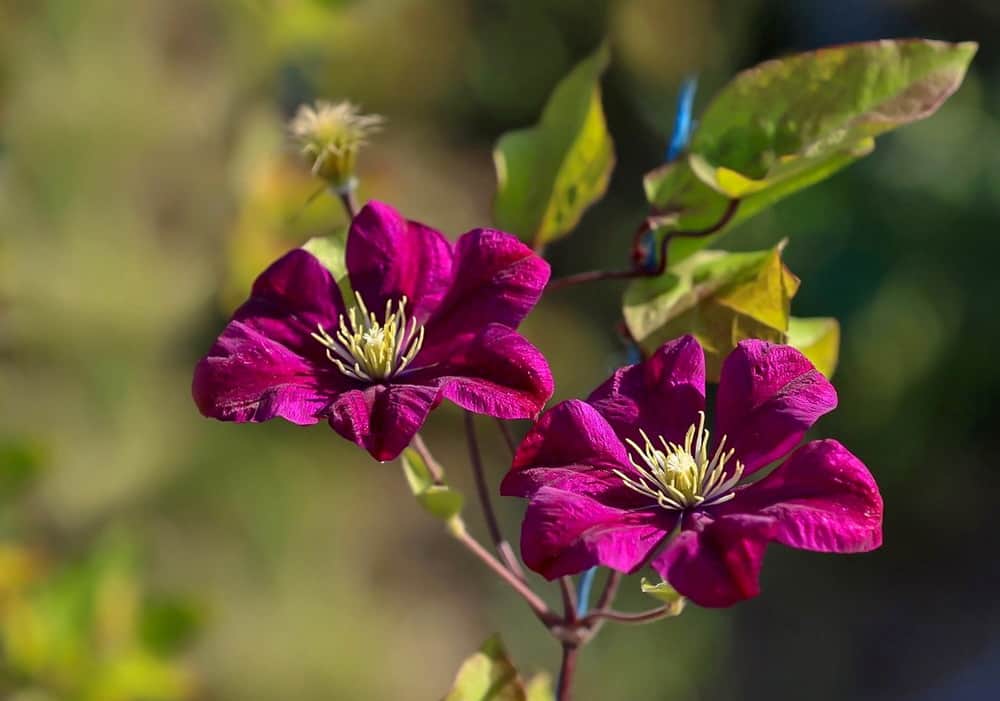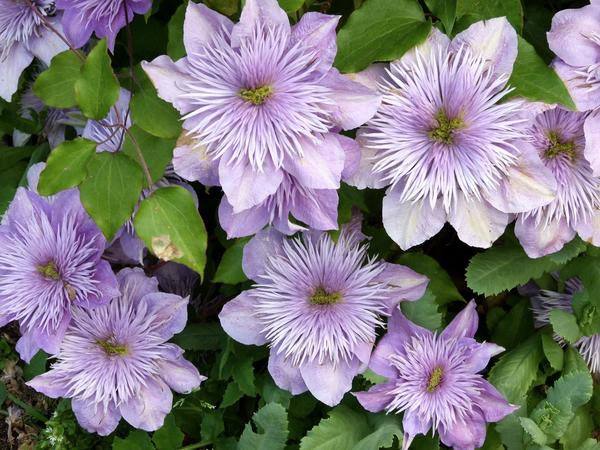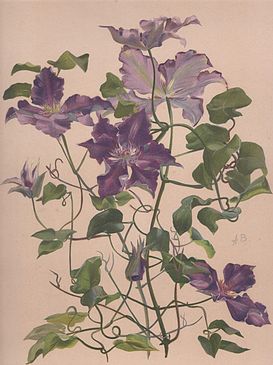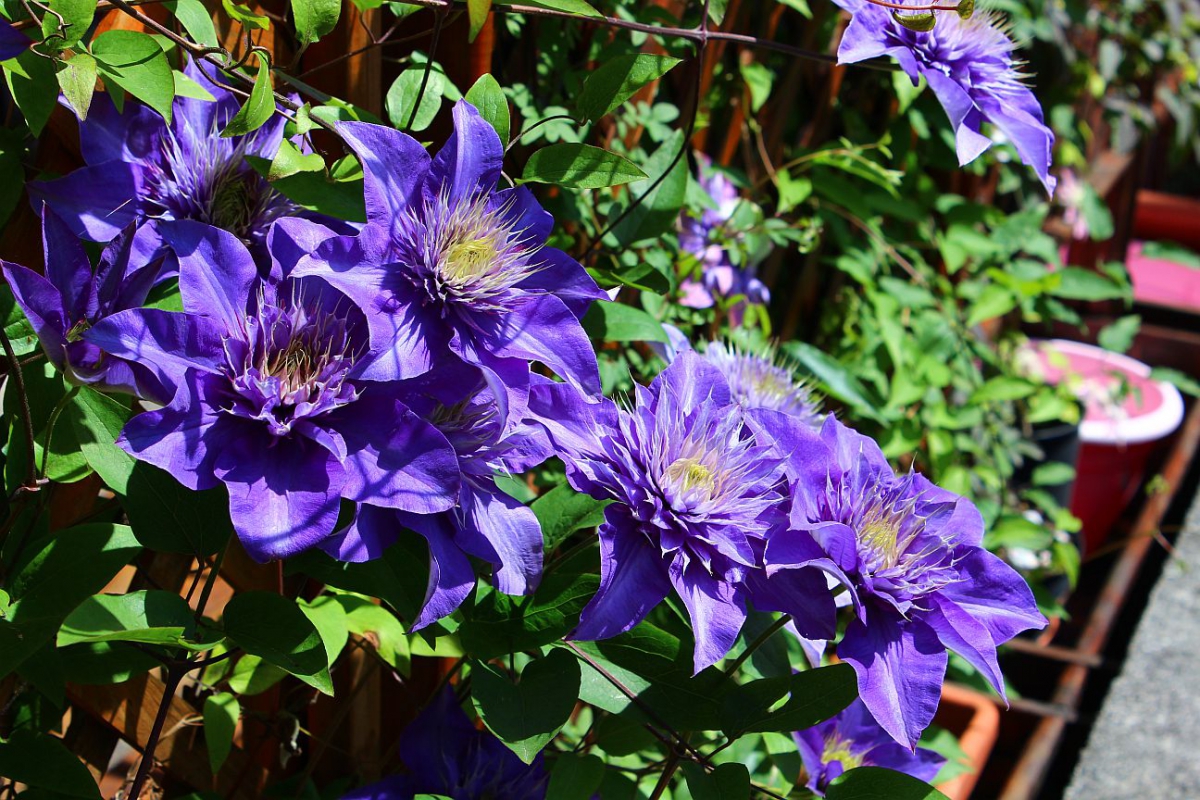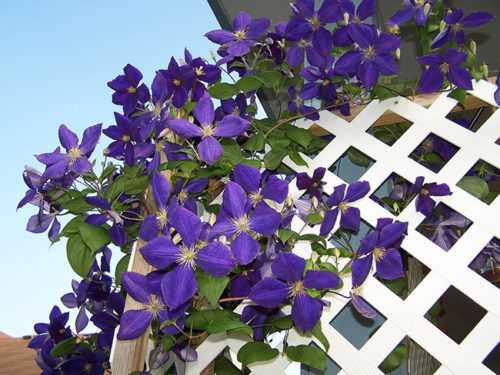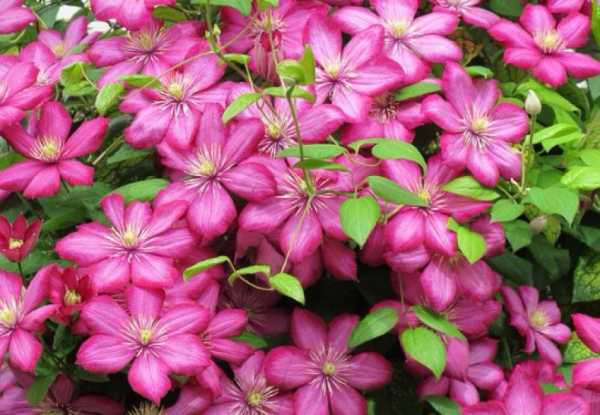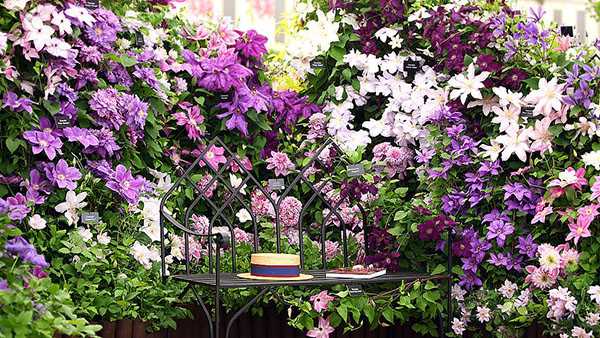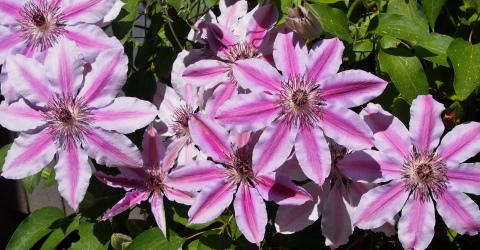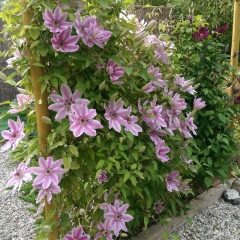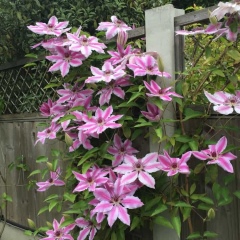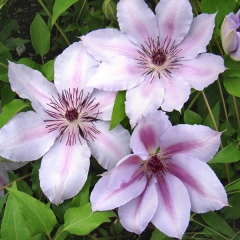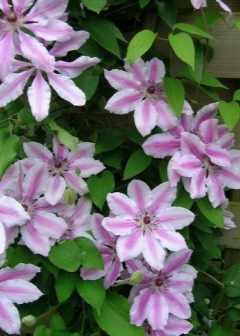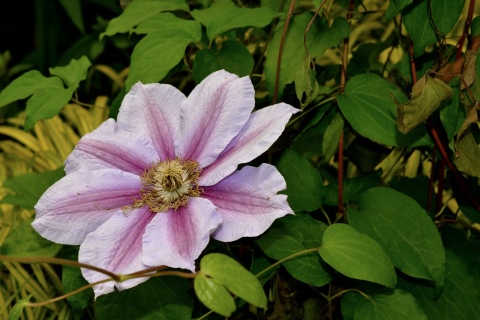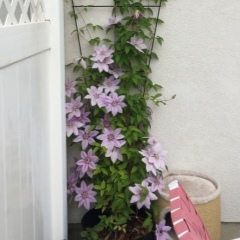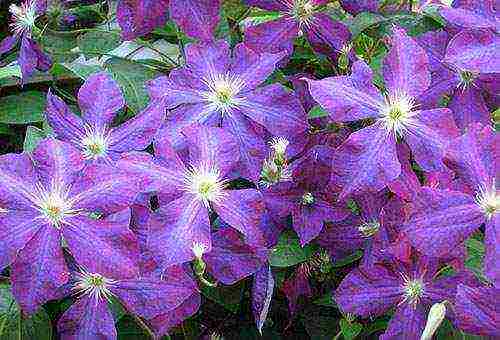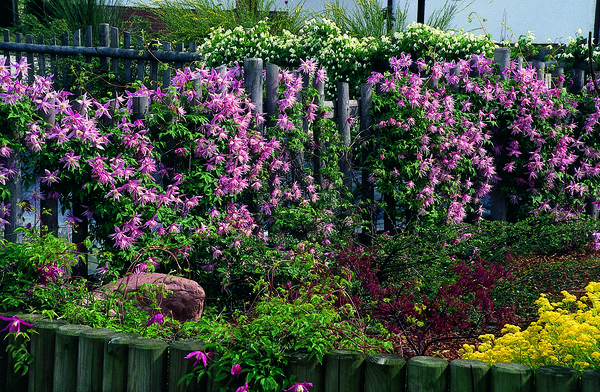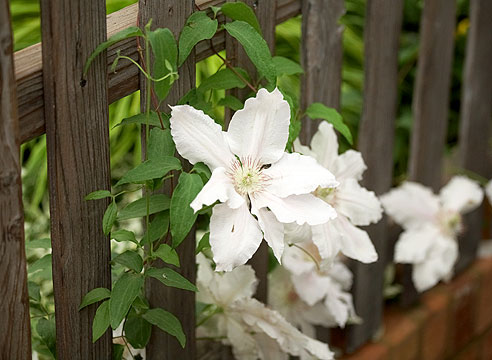The specifics of pruning and preparation for winter
The variety belongs to the second pruning group. When growing such clematis, gardeners throughout the year act as follows:
| Period | The specifics of pruning |
| Spring, after the snow melts | They remove shelters and unbuckle them, do sanitary pruning: remove shoots and their parts, broken or damaged by frost |
| At the end of the first "wave" of flowering | Cut the whips of last year completely |
| During the summer season | Thin the stems to provide "airing" of the bush |
| Autumn | Prepare the plant for wintering, leaving only the strongest shoots of the current year. Each of them is shortened by about a third. |
"Kaiser" is able to winter without shelter only in regions with warm winters. In the middle lane and more northern regions, it must be covered.
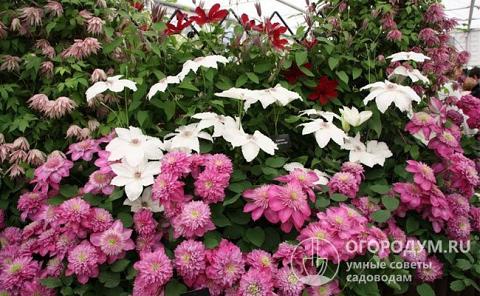 Kaiser can do without shelter for the winter in the conditions of the southern regions or in protected ground
Kaiser can do without shelter for the winter in the conditions of the southern regions or in protected ground
It is important to understand that the root system of a plant and underground growth buds can die not only from frost, but also from dampness. Therefore, the best option for a "winter house" in this case is considered to be an air-dry shelter.
They build it like this:
- in the fall, the stems of clematis are removed from the support, shortened and rid of the remnants of the leaves. The bases of the shoots are mulched with a mixture of pure sand and wood ash;
- after constant slight frosts are established, a dry day is chosen. The lashes are carefully rolled up and laid on the ground, wrapped in a non-woven covering material (agrospan, spunbond, etc.). A wooden box is installed on top (if the bush is large, you will need two boxes and boards that need to be laid on them);
- a box or "platform" of boxes and boards is covered with a material that does not allow water to pass (greenhouse film or roofing felt), and its edges are pressed to the ground, but so that there are passages for air below;
- after the onset of real cold weather, the entire structure is covered with spruce branches or fallen leaves, and then covered with snow.
If the shelter is done correctly, it protects the stems and root system of clematis from frost, and during thaws it does not let moisture inside, which promotes rotting and damping.
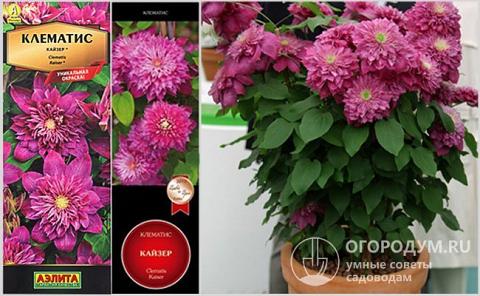 Planting material is offered by many well-known agricultural firms and nurseries.
Planting material is offered by many well-known agricultural firms and nurseries.
Clematis "Kaiser" is a wonderful plant that can decorate any area. Unfortunately, the variety cannot be called problem-free. It is more suitable for enthusiastic flower growers who already have solid experience in cultivating other varieties of this crop.
Planting and leaving
If you want to use this plant in decorating your site, then you should learn a few rules for planting it and the subsequent care of the plant. Following these rules will allow you to get a plant with high decorative qualities.
Selection of seedlings
When choosing seedlings, the following characteristics should be considered:
The root system of the seedling must be sufficiently developed
It is worth paying attention to this parameter most of all, since the survival rate depends on it. The roots should be over 30 centimeters long and less than 5.
There should be no thickenings on the roots
The thickening indicates that the plant is affected by a nematode.
Vegetative clematis buds are well developed. On seedlings obtained in the fall, there should be at least two of them. Spring seedlings must have at least one initial shoot.
It is recommended to purchase seedlings that are in containers or pots, as in this case you can transport them along with the soil, which significantly increases the chances of preserving the root system.
This variety has one feature - under the scorching sun, flowers can fade, so it is recommended to plant them in shaded areas. The north side of the house is ideal, especially if the wall is light. If you plant a plant near the wall of the house, the distance to it should be at least half a meter, and if next to a tree - about one meter.
Before planting a plant, you need to think in advance where the mounts for the future vine will be located.
Landing dates
Autumn is the best time to plant clematis. At this time, the root system is most active, which contributes to rapid rooting. In the case of central Russia, the ideal month is September; in more southern regions, you can wait until October.
If you decide to plant in the spring, it should be done at the earliest possible date, before the buds began to grow, that is, from the end of April to the beginning of May. If by this time the active growth of shoots has already begun, it is worth waiting for their lignification.
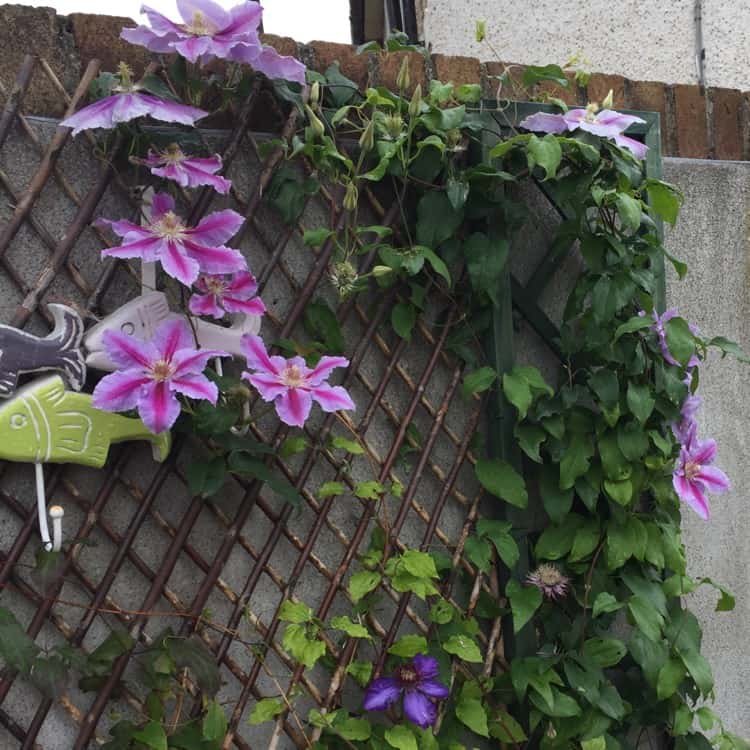
If clematis was grown in a container, it can also be planted in summer. However, as in the case of spring planting, pinching is required in the summer, that is, pinching the growth point on the shoots.
Soil requirements
Clematis is not picky about the soil, but light and fertile soil will be the ideal soil. It is best to choose loam or sandy loam soil. Slightly acidic soils work best. Clematis requires regular watering, but excessive soil moisture will also damage it, as it naturally grows in wet undergrowth conditions.
To shade the roots, it is recommended to plant low-growing herbaceous plants next to clematis. Clematis tolerates competition with other plants quite well. If the soil in which you are going to plant clematis is poor, you should feed it with manure, rotted compost, humus, peat, mineral fertilizers. The main thing is to increase the moisture content of the soil.
If the gardener wants to improve the clay soil, it is recommended to dig or deeply loosen the earth, add humus and coarse sand, gravel.
Landing rules
Before planting this plant in open ground, it is required to cut it at the level of 1-2 buds from the roots. It is necessary to dig a hole in the proportions of 60x60x60 cm.If you use not sandy and loamy soil, but heavier soil, then it is recommended to increase the size of the hole, and pour a 10-cm layer of gravel or gravel on the bottom, making the soil more drained.
After planting, the earth must be watered and compacted, and then mulched with a 3-5 cm layer of humus, peat or sawdust.
Care
Almost all care consists in feeding and watering regularly. Water the plant once a week If the weather is hot - 2-3 times
It is important for the root system of this plant to prevent the soil from drying out. 1-2 days after watering, the soil must be loosened
Top dressing is done 3-5 times during the season:
- when buds form;
- after the first and second flowering;
- After every trimming.
Chicken droppings, a solution of liquid algae (1k10), fermented infusion of green grass (2 liters per 10 liters of water), as well as universal complex mineral fertilizers are well suited for feeding.
Clematis Nelly Moser is an unpretentious liana with large flowers of delicate colors. Due to its qualities, in particular winter hardiness, it is very common among gardeners in different regions. Clematis decorate walls, gazebos, fences and almost anything that can support them.
4 Soil requirements
The plant is undemanding to the soil, but prefers light and fertile soil, sandy loam or loamy. Slightly acidic soils are best suited. Since in nature clematis grows in undergrowth conditions in humid regions, it requires abundant watering, but water stagnation should not be allowed.In order to shade the roots, planting clematis can be combined with low-growing herbaceous plants. Clematis tolerates root competition well with other plants.
If planting is carried out in poor sandy soils, then peat, humus, rotted compost or manure, complex mineral fertilizers are added. The main requirement for such soils is to increase their moisture capacity. To improve clay soils, gravel, coarse sand and humus are added, deep loosening or digging of the earth is carried out. In heavy soil, the pit for planting is prepared in advance, one month in advance.

